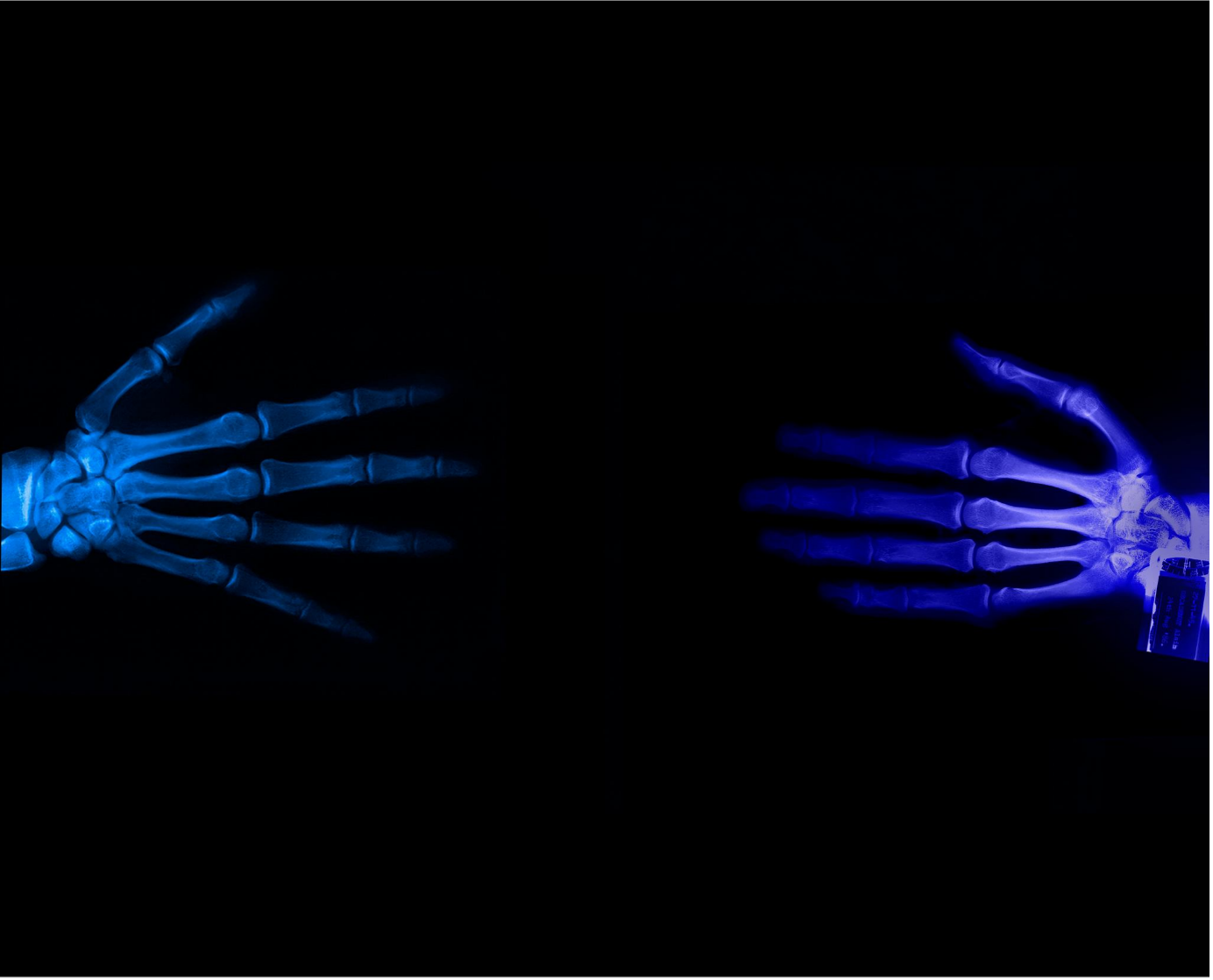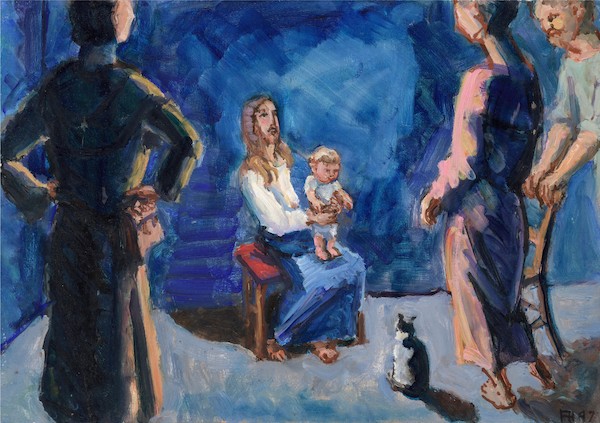
No Innocent Bystanders
Honoré Daumier’s Ecce Homo is one of the most haunting images of Jesus Christ produced in nineteenth-century France. Part of this painting’s success, as an example of the Realist method applied to a biblical narrative, is the direct engagement that the work of art establishes between the subject and the viewer.
One of only a handful of Daumier’s works that depict a biblical subject, Ecce Homo was an unusual subject for the artist. A celebrated caricaturist, he is known for works such as Rue Transnonain April 15 1834 and The Third-Class Carriage, art that critiqued contemporary social inequity. As a subject highlighting the corruption of a justice system, the trial of Christ iconographically fits within a recurring theme in Daumier’s art. The mob gathered to taunt Christ recalls contemporary episodes of political unrest frequently evoked in nineteenth-century Realist art.
Probably begun as a church commission, Ecce Homo remains unfinished. Depicting the scene in shades of brown, ranging from a pale yellowish sky to deep black shadows, this is the underpainting of an in-progress work. However, from our twenty-first-century vantage point, the painting’s incomplete state gives it a sense of drama and immediacy, as if the event is unfolding before us.
Wearing a crown of thorns, Christ is displayed before the crowd as a figure of ridicule. As a twisted symbol of his sovereignty, the crown of thorns identifies this as a moment of derision. Positioned on a platform, above the visual turmoil of the crowd, Christ is motionless and resolute. Silhouetted against a sacred light, this calm figure has a heroic stillness. This painting visually places him between earth and heaven. In Daumier’s Ecce Homo Christ is simultaneously exploited as a human sacrifice and exalted as a divine savior.
Daumier’s composition, with large foreground figures placed directly against the picture plane, situates the viewer among the angry mob. But what is our role in this unfolding travesty of justice? Are we one of Christ’s cruel tormentors? Are we one of his devoted followers? In Daumier’s Ecce Homo we might be both simultaneously. Either way, the painting directly implicates the viewer in the event. Daumier’s painting transforms the viewer from a passive spectator of this spectacle to an engaged witness with something at stake in the drama.
Daumier’s work has sometimes been erroneously titled “Give Us Barabbas.” However, the crown of thorns that Christ wears helps to correctly identify the painting’s subject. This is the moment, described in the Gospel of John chapter 19, when Christ is presented to be mocked by the crowd. Pilate declares, “Behold the man!” Correctly identifying this painting’s subject is significant, because the edict “behold the man” more directly relates to the demands that Daumier makes of the viewer.
With his command “behold the man,” Pilate compels the crowd to look. The derisive gaze of the crowd within the depicted biblical scene corresponds to the viewer’s own viewing of the painting. Daumier was able to make the very act of looking at his painting an act of gazing at Christ.
The phrase “behold the man” is from the King James translation of the Bible. The relationship of this pronouncement to our engagement of Daumier’s image may be obscured by this antiquated language. In its contemporary usage the verb “to behold” is likely to be associated with an attitude of admiration or even adoration. Therefore, to experience the full impact of this command we should hear Pilate’s imperative as “look at this man.” This is a moment of exploitation. The edict “look at him” better captures the weight of this injustice.
Ecce Homo evidences what might be called Daumier’s “moral gaze.” Every work of art visualizes a way of looking at the world. When the artist depicts a subject, such as a figure, a landscape or even abstract form, they show that subject as seen from a particular point of view. (While this may sound self-evident, we rarely think about it as a factor in looking at art.) Nevertheless, this is significant because the way in which the subject is depicted, the how it is framed, the angle from which it is viewed, and other factors all combine to creating a certain way of seeing the subject. The work of art is never neutral. It always advocates a way of looking, an attitude, a position at or toward the subject. When that subject is Christ, the position that the artist assumes for the viewer takes on sacred consequence.
Looking at a work of art means assuming and accepting the artist’s point of view. The term “gaze” is used to describe a way of looking at a subject that is assumed by the work of art. Most famously there is the “male gaze” – this type of gaze presumes a male viewer and the presentation of a subject, such as a female nude, for that viewer’s satisfaction.
Like the male gaze the moral gaze objectifies its subject, but for a different purpose. Daumier’s Ecce Homo, as an example of the moral gaze, does not aim to delight but to confront. This painting’s composition fosters a gaze that implicates the viewer as a witness to this atrocity of justice. The work calls on the viewer to assume responsibility for justice. We are the subject’s moral conscience. Honoré Daumier’s Ecce Homo transforms the viewer from bystander to accomplice. Being visually present in the trial of Jesus Christ, the viewer is compelled to sympathize and identify with him as an exploited subject. The work situates the viewer between judgment and compassion.
**********
Honoré Daumier: Ecce Homo, ca 1851, oil on canvas, 162,5 x 130 cm, Museum Folkwang, Essen, Germany.
Honoré Daumier (1808 – 1879) was a prolific French caricaturist, painter and sculptor. Daumier produced over 500 paintings, 4000 lithographs, 1000 wood engravings, 1000 drawings and 100 sculptures. A prolific draughtsman, he was best known for his caricatures of political figures and satires on the behavior of his countrymen, although posthumously the value of his paintings has also been recognized.
James Romaine is an associate professor of art history at Lander University, Greenwood, SC, USA. His videos on Honoré Daumier and the moral gaze can be seen at Seeing Art History, https://www.youtube.com/watch?v=-g1pkDfwdrY and https://www.youtube.com/watch?v=h7MwkyIydMY.
ArtWay Visual Meditation August 27, 2017
%20(1).png)












